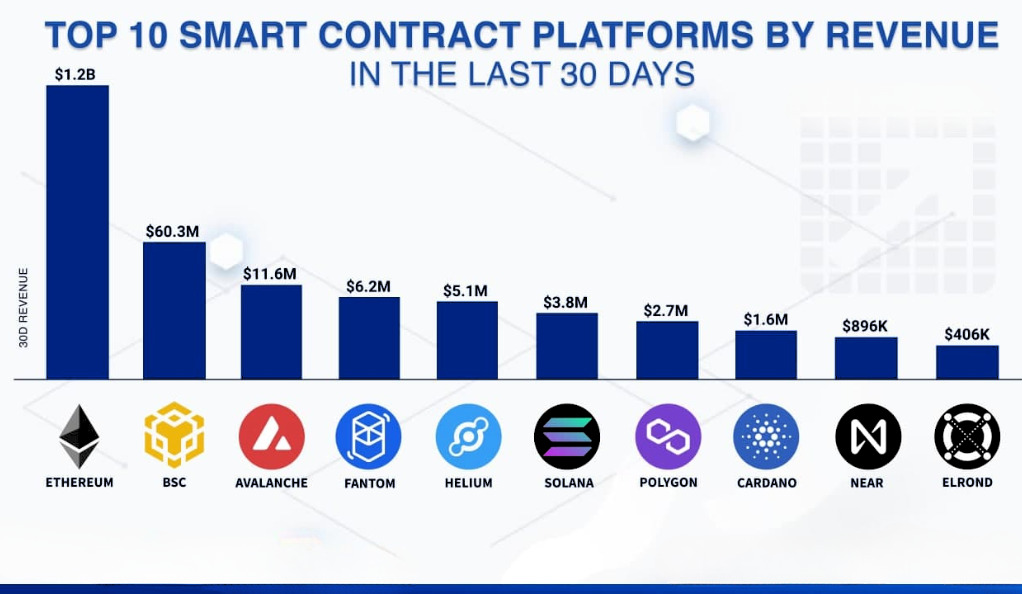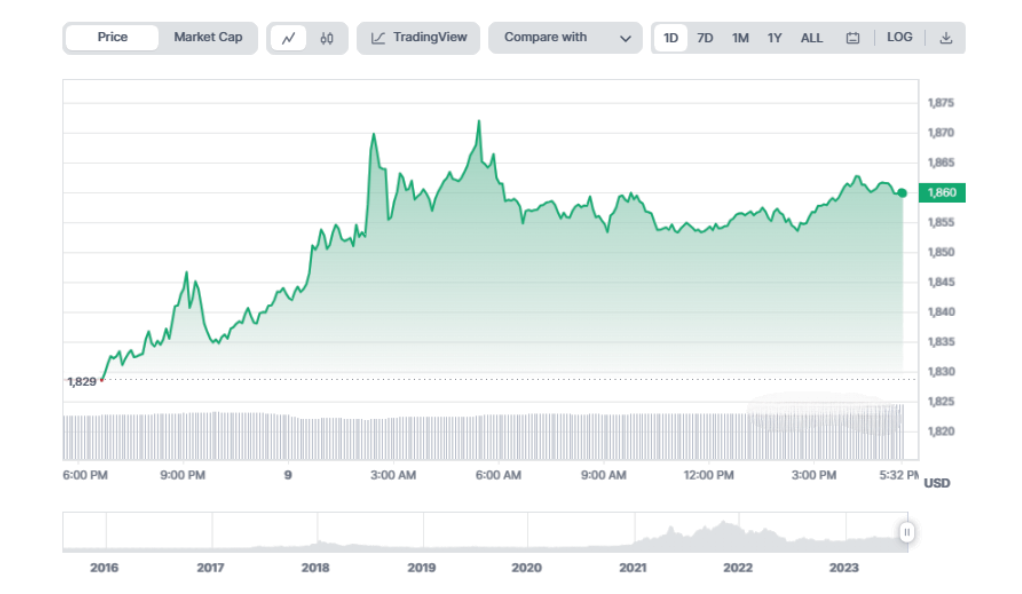Ethereum, often dubbed the ‘World’s Computer’, didn’t just gain traction due to its functionality. It became the heartthrob of many investors because of its thrilling price journey. Each price swing tells a tale of technological advancements, market sentiments, and macroeconomic factors coming into play.
From its inception, Ethereum showcased its potential by introducing the world to smart contracts — self-executing contracts with the terms of the agreement directly written into code. This unique feature, coupled with its decentralized platform, made Ethereum the darling of the blockchain community.
Ethereum’s Historical Price Movements
The Launch and Initial Growth
The early days of Ethereum, back in 2015, were filled with anticipation and excitement. While its initial price was modest, the buzz around its potential was palpable. As the world began to understand the vast applications of Ethereum, especially its smart contract capability, the price started reflecting its growing popularity.
Ethereum, despite being in its nascent stage, showed signs of disrupting traditional financial systems. Many realized that Ethereum was not merely a digital currency but a platform that could reshape industries. This realization laid the foundation for the meteoric rise that was to follow.
2017: The ICO Boom
2017 was a hallmark year for Ethereum. ICOs, which allowed new crypto projects to raise funds by issuing tokens on the Ethereum platform, were all the rage. The demand for Ether (ETH), Ethereum’s native token, surged as it was often used to participate in these ICOs.
However, with highs came lows. The influx of ICOs meant many projects with little to no real-world application. While the year began with euphoria, it ended with skepticism and scrutiny, leading to a cooling period for Ethereum’s price.
Post-Boom Slump and Recovery
Post the ICO frenzy, Ethereum, like most of the crypto market, entered a bearish phase. Prices plummeted, and doubts emerged about the future of crypto. However, true to its resilient nature, Ethereum bounced back. The introduction and rise of Decentralized Finance (DeFi) platforms breathed new life into Ethereum.
The decentralized apps (dApps) on Ethereum started to gain traction, offering everything from lending services to decentralized exchanges. Ethereum’s adaptability and the community’s faith ensured that its story was far from over.
Technical Analysis and Ethereum
Key Indicators to Watch
For traders and investors, understanding technical analysis is pivotal. Moving Averages, which show the average price over a specific time frame, can indicate potential buy or sell signals. Similarly, the Relative Strength Index (RSI), which measures the magnitude of recent price changes, helps in gauging overbought or oversold conditions.

Patterns also play a crucial role. Recognizing formations like the bullish ‘head and shoulders’ or bearish ‘double top’ can help traders anticipate future price movements. These tools, when used wisely, can maximize profits and minimize losses.
Importance of Volume in Analysis
Volume, often overlooked, is a significant player in technical analysis. It provides insights into the strength or weakness of a price trend. A high volume indicates strong interest, and when paired with price analysis, it can confirm a trend’s direction.
For instance, a price rise with high volume is more sustainable and significant than the same price rise with weak volume. By understanding the correlation between volume and price movements, investors can make informed decisions.
Understanding Market Sentiment
News and Announcements Impact
In the world of crypto, information is power. A single news piece or an announcement can lead to significant price swings. Regulatory news, technological advancements, or macroeconomic factors can play a role in price volatility.
Being updated with the latest news ensures that investors aren’t caught off guard. It’s essential to filter out noise and focus on impactful news, as the crypto world is rife with rumors and unsubstantiated information.
Community Engagement
The Ethereum community, a vibrant mix of developers, traders, and enthusiasts, is a gold mine of insights. Platforms like Ethereum Stack Exchange, Reddit’s r/ethereum, and Twitter are bustling with discussions, debates, and forecasts.
Being an active member of these communities helps in gauging the pulse of the market. From potential technological advancements to speculations about future partnerships, these platforms provide a 360-degree view of Ethereum’s world.
Emerging Opportunities in the Ethereum Space
Decentralized Finance (DeFi)
Imagine a world where financial transactions, from loans to insurance, are executed without intermediaries. This is the promise of DeFi — and Ethereum is at its core. By leveraging Ethereum’s smart contracts, DeFi platforms are decentralizing traditional financial systems.
With billions of dollars locked in DeFi projects, the potential is evident. These platforms offer better interest rates, more transparency, and are open to anyone with an internet connection, marking a revolutionary shift in the financial world.
Non-Fungible Tokens (NFTs)
The digital art renaissance is upon us, thanks to NFTs. These unique tokens, representing ownership of a specific item or piece of content, are mostly built on the Ethereum platform. They have revolutionized the art world by providing authenticity and provenance in the digital space.
But it’s not just art. NFTs are making waves in music, real estate, and even sports. Their versatility and the value they provide in establishing digital ownership are reshaping the internet landscape.
Forecasting Ethereum’s Future
Short-term Predictions
The crypto realm is notoriously volatile, making short-term predictions a challenging endeavor. Factors like global events, regulatory news, or a technological breakthrough can impact prices. However, by staying updated and leveraging technical analysis, one can navigate these tumultuous waters with more confidence.
It’s always wise to remember that in the short term, the crypto market is driven as much by sentiment and speculation as it is by fundamental value. Therefore, diversification and risk management are keys to protecting one’s portfolio.
Long-term Possibilities
Ethereum’s roadmap, which includes the much-anticipated Ethereum 2.0, paints a bright picture for its future. With improvements in scalability, security, and a shift to a more eco-friendly Proof of Stake (PoS) consensus mechanism, Ethereum aims to solidify its position as the leading smart contract platform.

The growing integration of blockchain technology in mainstream sectors, combined with Ethereum’s continuous upgrades, hints at a future where Ethereum is not just a cryptocurrency but an integral part of a decentralized future.
How to Stay Updated with Ethereum’s Movements
Reliable Sources of Information
The crypto space is awash with information, but not all of it is reliable. For accurate and up-to-date insights, platforms like CoinMarketCap, CoinGecko, and reputable crypto news outlets are invaluable. These platforms offer comprehensive data, from price charts to news updates.

Apart from data-centric platforms, following influential personalities in the Ethereum community on Twitter or joining Ethereum-focused podcasts can provide a holistic understanding of ongoing trends.
Joining Ethereum Communities
There’s strength in numbers. By becoming an active participant in Ethereum communities, one can gain firsthand knowledge, engage in enlightening discussions, and even contribute to the ecosystem. These communities, from online forums to local meetup groups, offer a wealth of information and are an essential resource for both newbies and veterans.
Conclusion
Ethereum’s journey, from its inception to its current status, is a testament to its resilience and the potential of blockchain technology. As Ethereum continues to evolve, adapting to market needs and technological advancements, its story remains one of the most captivating in the crypto universe. Whether you’re an investor, a techie, or simply a curious observer, Ethereum’s evolution offers valuable lessons and endless possibilities.
FAQs
Ethereum is not just a cryptocurrency. It’s a platform for decentralized applications and smart contracts, while Bitcoin primarily serves as a digital currency.
Ethereum uses a decentralized model and cryptographic techniques to ensure security. With the upcoming Ethereum 2.0, it plans to transition to a Proof of Stake mechanism, further enhancing security.
Ethereum 2.0 is an upgrade aiming to improve scalability, security, and sustainability. It marks a shift from a Proof of Work to a Proof of Stake consensus mechanism.
Absolutely! Ethereum’s platform is designed for building decentralized applications using smart contracts. With tools like Solidity, developers can create a wide range of applications.
DeFi platforms use Ethereum’s smart contracts to automate and decentralize financial transactions, eliminating intermediaries and offering more transparent and accessible financial services.